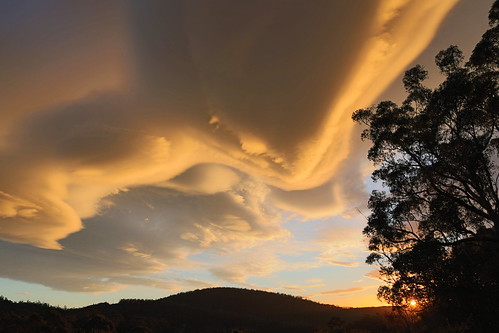 |
Off-track: Traversing a boulder field on kunanyi/Mt Wellington (Tasmania) |
We are creatures of the grid. It’s written in the landscapes we make; the rectilinear neatness of our footpaths, roads and railways; the cubed containment of our buildings; the maps we use to describe them all. Even our minds, as the digital age bites deeper, seem more and more inclined toward binary ways of thinking.
It’s enough to make you want to go off-grid from time to time, to seek some of the rounded, fecund chaos of the natural world. For me that not only means ‘going bush’, but making the extra effort to occasionally go off-track.
As I stand on the edge of the track, the safe, cairned or posted route, and scan the scrub, I am a sailor staring out to sea. Though I admire the view, and tell all who will listen that I love the ocean, until I push the boat out into the tide, I’m just another land lubber.
When I take that first few steps off the beaten path, I will notice an immediate difference. I will now feel the resistance of untrodden bushes, and will have to scan the ground for secure footing. I’ll notice the pungent waft of plant/earth/water/air; hear the crackle and scratch of undergrowth, the chip and chatter of bush birds.
I will find that I’m no longer merely traversing the terrain, I’m immersing myself in it. It is thrilling, and just a little chilling: an amalgam of newness and danger; freedom and risk.
Out in this sea of scrub, I start to see that tracks and maps and compasses and digital devices give us only an illusory mastery of the landscape. They can help, but I must equally rely on my senses. Wits, weather, maps, companions and dumb luck are all part of the mix when you’re off-track. Losing your way and then losing your head are a short-cut to losing your life.
Tasmania’s south-west wilderness provides many useful examples. The Frankland Range, for instance, has only vague routes and pads, rather than recognised tracks. Walkers tend to rely very much on visual cues and wobbles in topography that vary from the subtle to the gargantuan.
During one trip there, low cloud and phantom walker pads found us having to set up camp in the middle of some low alpine scrub. Only a few hundred metres from a known mountain, we thought that going on into the gloom would be too risky. It was a good decision, as we found out when the cloud lifted late the next morning.
Poor visibility and a series of minor navigational errors – despite proper use of map and compass - had compounded to take us onto a false spur. If we’d continued we’d have gone further in the wrong direction, and deeper into the unknown.
It’s not only cloud that can confound us in high places. The Southwest Cape Range, in the bottom left corner of Tasmania, is another largely trackless area. But here we found the trick was to tell the difference between pads formed by bushwalkers, and those formed by wombats or wallabies. The latter can make very fine routes, although they have limitations. Often a wombat pad continues as a low tunnel through thick scrub, leaving the walker to find their own way around – or through – the same scrub band.
It’s not necessary to be in the wilderness to get this “off-grid” feeling. I’ve discovered the same effect on the boulder streams of kunanyi/Mt Wellington. Although only a few hundred metres from the Pinnacle Road, we were free to choose to clamber over any and every dolerite boulder we wanted to, all the while wending our wonderfully wiggly way towards our destination.
 |
Tenuiramis woodland, South Hobart, Tasmania |
Still closer to home I might choose to wander off-path in South Hobart's tenuiramis woodlands, or wade and dally in the Domain's themeda grasslands. And I’ll discover much the same exhilaratioin about wandering off-track there as I will anywhere. It's not so much what our old maps used to warn us: 'Here be dragons'. It feels more like 'Here be fierce peace!'











